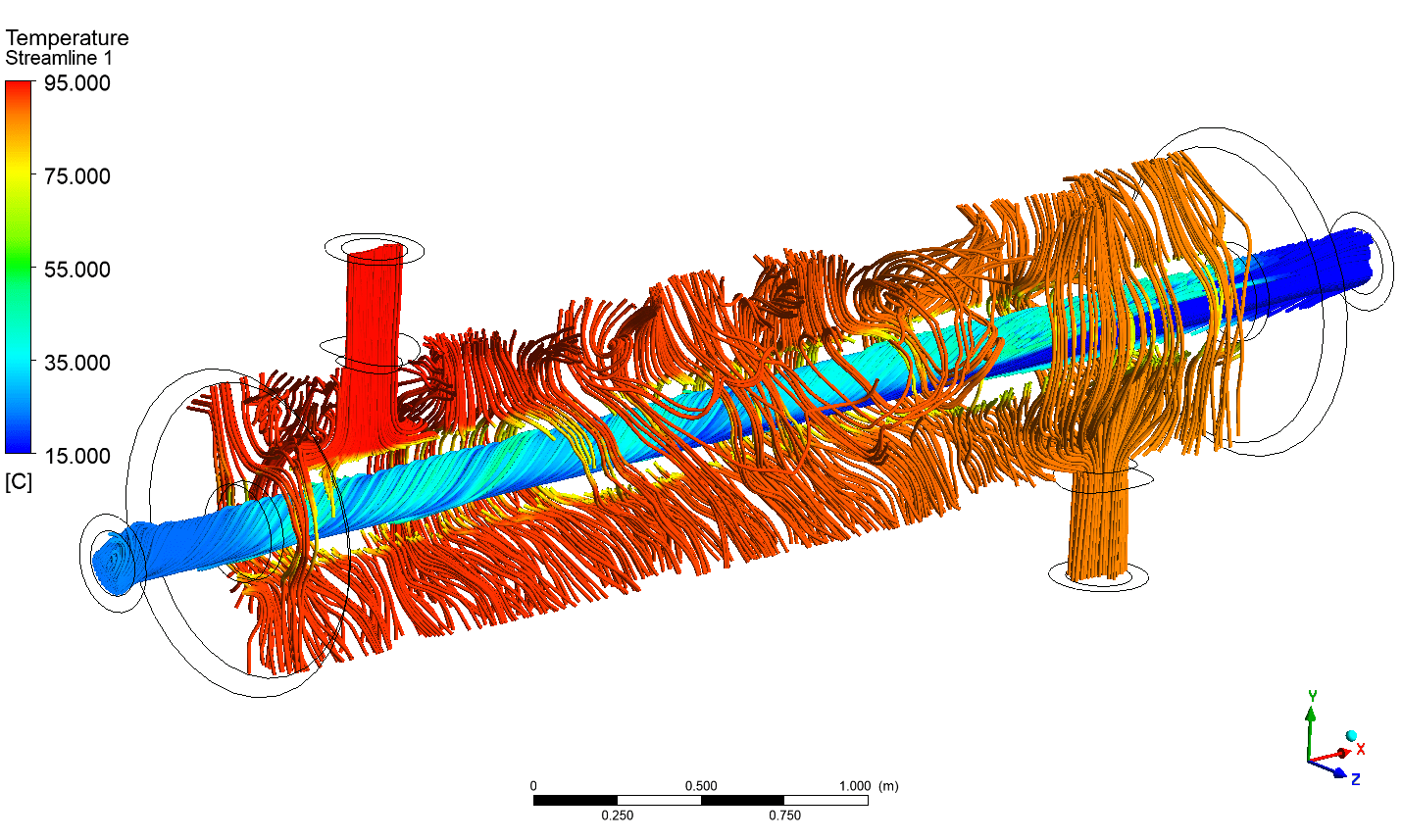Introduction:
In the realm of thermal engineering, the efficiency of heat exchangers plays a pivotal role in various industrial processes. Shell and tube heat exchangers, known for their versatility and effectiveness, are widely employed in diverse applications. Today, let’s delve into the fascinating world of Conjugate Heat Transfer Computational Fluid Dynamics (CFD) analysis using ANSYS Fluent, exploring how this powerful tool unveils the intricate details of heat exchange in these devices.
Understanding Shell and Tube Heat Exchangers:
Shell and tube heat exchangers are ingenious devices designed for transferring heat between two fluid streams with different temperatures. The basic structure comprises a series of tubes housed within a shell. One fluid flows through the tubes, while the other surrounds them in the shell. This design maximizes the surface area for heat transfer, making it ideal for applications ranging from refrigeration to power generation.
Importance of Conjugate Heat Transfer CFD Analysis:
Conjugate Heat Transfer (CHT) analysis is a sophisticated approach in CFD, allowing engineers to simulate heat transfer across different materials. In the context of shell and tube heat exchangers, this method is instrumental in capturing the complex interactions between fluid flow and solid structures. ANSYS Fluent, a cutting-edge CFD software, provides a robust platform for conducting such analyses, offering accurate insights into temperature distributions, thermal gradients, and overall heat transfer efficiency.
Key Steps in Conjugate Heat Transfer CFD Analysis:
- Geometry and Mesh Generation: Begin by creating a 3D model of the heat exchanger geometry, including the shell, tubes, and baffles. ANSYS Fluent supports a user-friendly interface for mesh generation, ensuring a fine balance between accuracy and computational efficiency.
- Material Properties and Boundary Conditions: Define the material properties for both the fluid and solid domains. Assign appropriate boundary conditions, considering the inlet and outlet temperatures, fluid velocities, and heat fluxes. This step is crucial for capturing the real-world behavior of the heat exchanger.
- Solver Settings: ANSYS Fluent offers various solver options for conjugate heat transfer simulations. Configure the solver settings to accurately model heat conduction within the solid components and convective heat transfer in the fluid domain.
- Post-Processing: After the simulation, delve into the post-processing phase to extract valuable information. ANSYS Fluent provides tools for visualizing temperature distributions, heat fluxes, and fluid flow patterns. This step enables engineers to identify potential areas for improvement in the heat exchanger design.
Geometry and Mesh Generation:
Material Properties and Boundary Conditions:
Solver Settings:
Post-Processing:
Benefits of Conjugate Heat Transfer CFD Analysis:
- Optimization: Identify design inefficiencies and optimize the heat exchanger for enhanced performance.
- Thermal Stress Analysis: Assess the impact of temperature gradients on structural integrity, aiding in the prevention of material failures.
- Accurate Predictions: Gain a deeper understanding of temperature profiles, ensuring the heat exchanger operates within safe and efficient limits.
Optimization:
Thermal Stress Analysis:
Accurate Predictions:
Conclusion:
Conjugate Heat Transfer CFD analysis in ANSYS Fluent empowers engineers to unravel the intricacies of shell and tube heat exchangers. By providing a comprehensive understanding of fluid-solid interactions, this approach facilitates the design of more efficient and robust heat exchange systems. As industries continue to push the boundaries of thermal engineering, the marriage of simulation technologies like ANSYS Fluent with real-world applications ensures a sustainable and innovative future for heat exchanger design.
Buy PC parts and build a same PC like me which can handle upto 6 million mesh count using Amazon affiliate links below –
Buy PC parts and build a same PC like me which can handle upto 6 million mesh count using Amazon affiliate links below
DDR5 CPU
DDR5 RAM
Gen 4 SSD
Mouse and Keyboard
Motherboard
https://www.bermondseykitchen.co.uk/foodhttps://tupbebegim.org/https://www.texseniorlaw.com/about-us
GTX 1650 GPU
Cabinet
PSU

thats a really good post
I am glad you liked it.